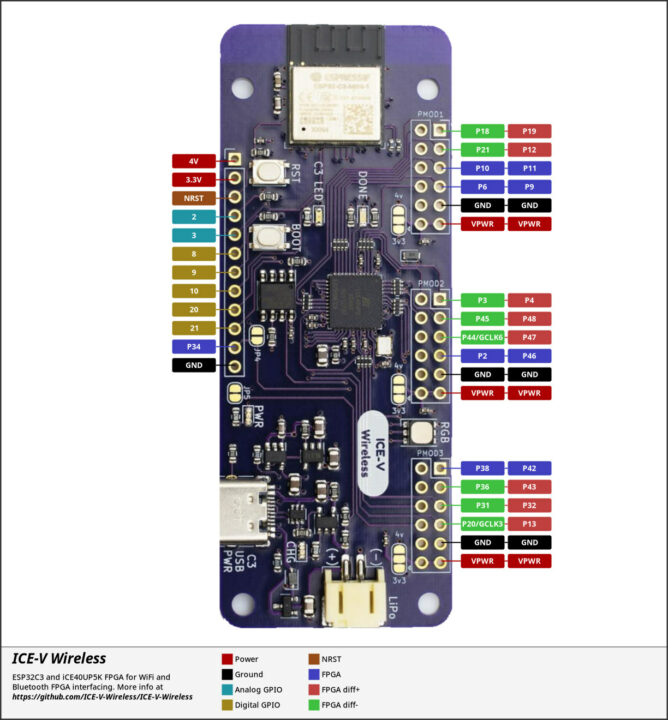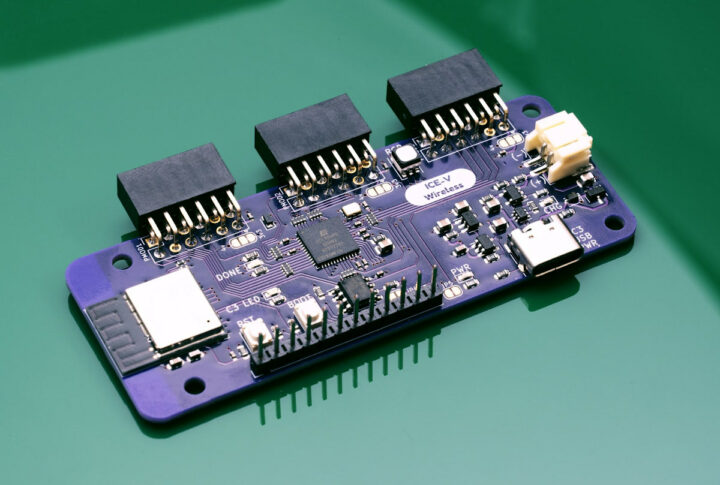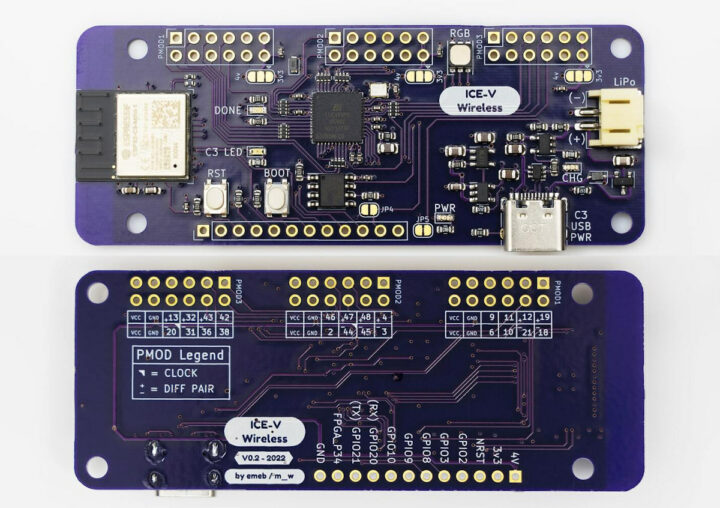Lattice Semi ICE40 boards are pretty popular notably thanks to the availability of open-source tools. ICE-V Wireless is another ICE40 UltraPlus FPGA board that also adds wireless support through an ESP32-C3-MINI-1 module with WiFi 4 and Bluetooth LE connectivity.
Designed by QWERTY Embedded Design, the board also comes with 8MB PSRAM, offers three PMOD expansion connectors, plus a header for GPIOs, and supports power from USB or a LiPo battery (charging circuit included).
ICE-V Wireless specifications:
- FPGA – Lattice Semi ICE40UP5K-SG48 FPGA with 5280 LUTs, 120 Kbits EBR RAM, 1024 Kbits PSRAM
- External RAM – 8MB PSRAM
- Wireless – ESP32-C3-MINI-1 module with 2.4 GHz WiFi 4 and Bluetooth LE through ESP32-C3 RISC-V processor, 4MB flash.
- USB – 1x USB Type-C port for power, programming, and JTAG debugging of the ESP32-C3 module
- Expansions
- 3x PMOD connectors connected to the FPGA
- I/O connector with 7x ESP32-C3 GPIO lines (serial, ADC, I2C) and one FPGA line, plus power, ground, and reset.
- Misc – RGB LED, Reset and Boot buttons, various LEDs for power, charging, etc…
- Power Supply
- 5V via USB-C port
- LiPo power/charger
- Dimensions – TBD
The ESP32 firmware is written in C with the ESP-IDF V5.0 toolchain and libraries and provides a TCP socket interface over WiFi that loads the FPGA configuration at powerup from a SPIFFS filesystem contained in the ESP32-C3’s flash, and allows for updates to the FPGA over WiFi (ESP32 and ICE40 are connected through SPI), as well as monitoring of the LiPo battery voltage. The iCE40 FPGA gateware demonstrates basic SPI monitor/control via SPI with a flashing LED. The host computer can control the board through a Python script.
The KiCad 6.0-based hardware design is open-source, and so are the firmware, gateware, and Python script just mentioned, with everything hosted on Github, where you’ll also find some basic documentation.

The ICE-V Wireless FPGA board is now offered on GroupGets for $75 plus shipping with the group buying campaign scheduled to end on August 16, 2022.

Jean-Luc started CNX Software in 2010 as a part-time endeavor, before quitting his job as a software engineering manager, and starting to write daily news, and reviews full time later in 2011.
Support CNX Software! Donate via cryptocurrencies, become a Patron on Patreon, or purchase goods on Amazon or Aliexpress





